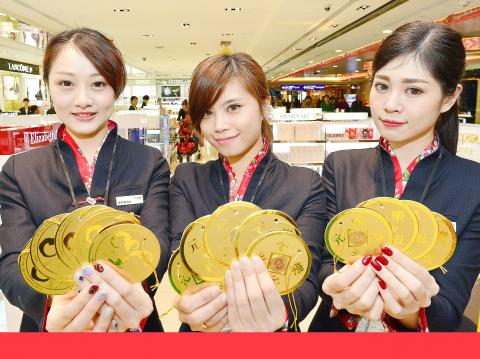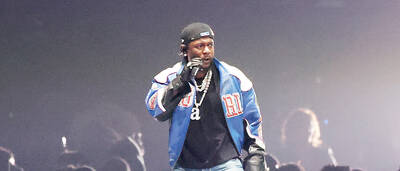A New Taipei City woman surnamed Liu pretended to an online acquaintance surnamed Chen that she worked at Taoyuan Airport and could get cigarettes at a preferential price. In this way, she fraudulently obtained NT$164,440. The victim sued Liu for damages, and the judge at the summary court of New Taipei District Court in Banciao District ruled that Liu must pay Chen NT$164,440, with leave to appeal.
The written judgment notes that Liu got to know Chen while shopping online in September last year. It says that she told Chen that she worked at the airport and could order cigarettes at a more preferential price through her supervisor, and in this way defrauded the victim of more than NT$160,000.
That is not all. Liu had plenty more tricks up her sleeve. As well as pretending to be an employee of the High Speed Rail and falsely claiming to post office employees, volunteers and others that she could buy High Speed Rail tickets at a staff price (50 percent off), she also repeatedly defrauded other victims by saying that her younger sister’s husband was a manager at the High Speed Rail Corporation and could buy High Speed Rail tickets at the staff rate.

Photo: Yao Kai-shiou, Liberty Times
照片:自由時報記者姚介修
In the criminal proceedings, the court of the first instance sentenced Liu to a one year and 11 months term of imprisonment, of which five months could be commuted to a fine. As to Chen, the victim who was tricked out of the largest sum of money, she sued Liu for damages, demanding that she return the amount of more than NT$16,000, but Liu said that because she is currently serving her sentence in jail, she cannot pay the money back as a lump sum.
(Liberty Times, translated by Julian Clegg)
新北市劉姓女子向陳姓女網友佯稱自己任職於桃園機場,可以取得優惠的香菸,詐得十六萬四千四百四十元,被害人提出求償,新北地院板橋簡易庭法官判劉女應給付十六萬四千四百四十元,可上訴。
判決書指出,去年九月間,劉女因網購原因,結識陳女,竟向陳女騙說,自己任職於機場,可透過主管代訂較優惠價格香菸,詐得十六萬餘元。
不僅如此,劉女花招百出,除佯稱自己是高鐵公司員工,向郵局員工及志工等人騙稱可以員工價格(即五折)購買高鐵車票,甚至拿說自己妹婿是高鐵公司經理,可以員工價格購買高鐵車票,不斷詐欺其他被害者。
刑事部分,一審法院依詐欺罪,判劉一年十一月徒刑,其中五個月得易科罰金;被騙最多的陳女提出求償,要求返還十六萬餘元,劉女卻說因目前在監執行,無力一次付清。
(自由時報記者王定傳)

詞法—不定詞的誤用 1. 我得記住星期五要把報告寫好。 ˇ I must remember to finish my report by Friday. χ I must remember finishing my report by Friday. 註︰remember 後面跟動名詞或不定詞表示兩種不同的概念,與 forget 相類似。 試比較下列句子: I remember meeting him somewhere.(我記得曾經在某處見過他。) I must remember to meet him at the station at six this evening. (我必須記住今晚六點得去車站接他。) He remembered turning off the light when he left the room. (他記得離開房間時曾先把燈熄了。) Remember to turn off the light when you leave the room. (記住離開房間時要把燈關了。) 2. 他提醒她做好她份內的事。 ˇ He reminded her to do her job. χ He reminded her of doing her job. 註︰remind ... of ... 後面跟動名詞,表示「使人想起做過某事」。若是「提醒某人應做某事」,應用 remind ... to do ...。試比較下列句子: He reminded me of my attending the lecture last Friday. (他讓我想起我上星期五去聽過那次演講。) He

A: Happy New Year! I can’t believe it’s 2026 already. Where did you count down? B: I went to pop singer A-mei’s Taitung concert yesterday for the New Year’s countdown. How about you? A: I went to rock band Mayday’s Taichung concert yesterday. Going to their New Year’s shows has become a holiday tradition for me. B: Don’t forget, we’re also going to Jolin Tsai’s show tonight. It’s her first perfomance at the Taipei Dome. A: Yeah, that’s right. It’s great to start the year with good friends and good music. A: 新年快樂!我真不敢相信都已經2026年了。你昨天去哪跨年啦? B: 我昨天去了流行天后張惠妹的台東演唱會,還和她一起跨年倒數。那你呢? A:

A: Apart from Taiwan’s A-mei, Mayday and Jolin Tsai, there are many foreign singers coming to Taiwan early this year. B: The South Korean girl group Babymonster are playing two shows at Taipei Arena starting from tonight. Who else is coming to Taiwan? A: Other artists include Australian band Air Supply, K-pop superstar Rain, boy group Super Junior, TXT, US singers Giveon and Josh Groban, and Irish boy group Westlife. B: Air Supply was the first foreign band to come to Taiwan in 1983, and they’re probably the most frequently visiting group too. A: As the year is beginning

Kendrick Lamar is a world-renowned rapper with numerous accolades to his name. He has won 22 Grammy Awards and __1__ music charts in countries all around the globe. One unexpected accomplishment he can add to the list is being a lifesaver, thanks to his 2024 hit “Not Like Us.” According to the American Heart Association (AHA), this song has the perfect tempo for performing Hands-Only CPR. Cardiopulmonary Resuscitation (CPR) is a critical lifesaving __2__ used when someone suffers cardiac arrest and their heart stops beating. It aims to maintain blood flow to vital organs until __3__ help arrives. There